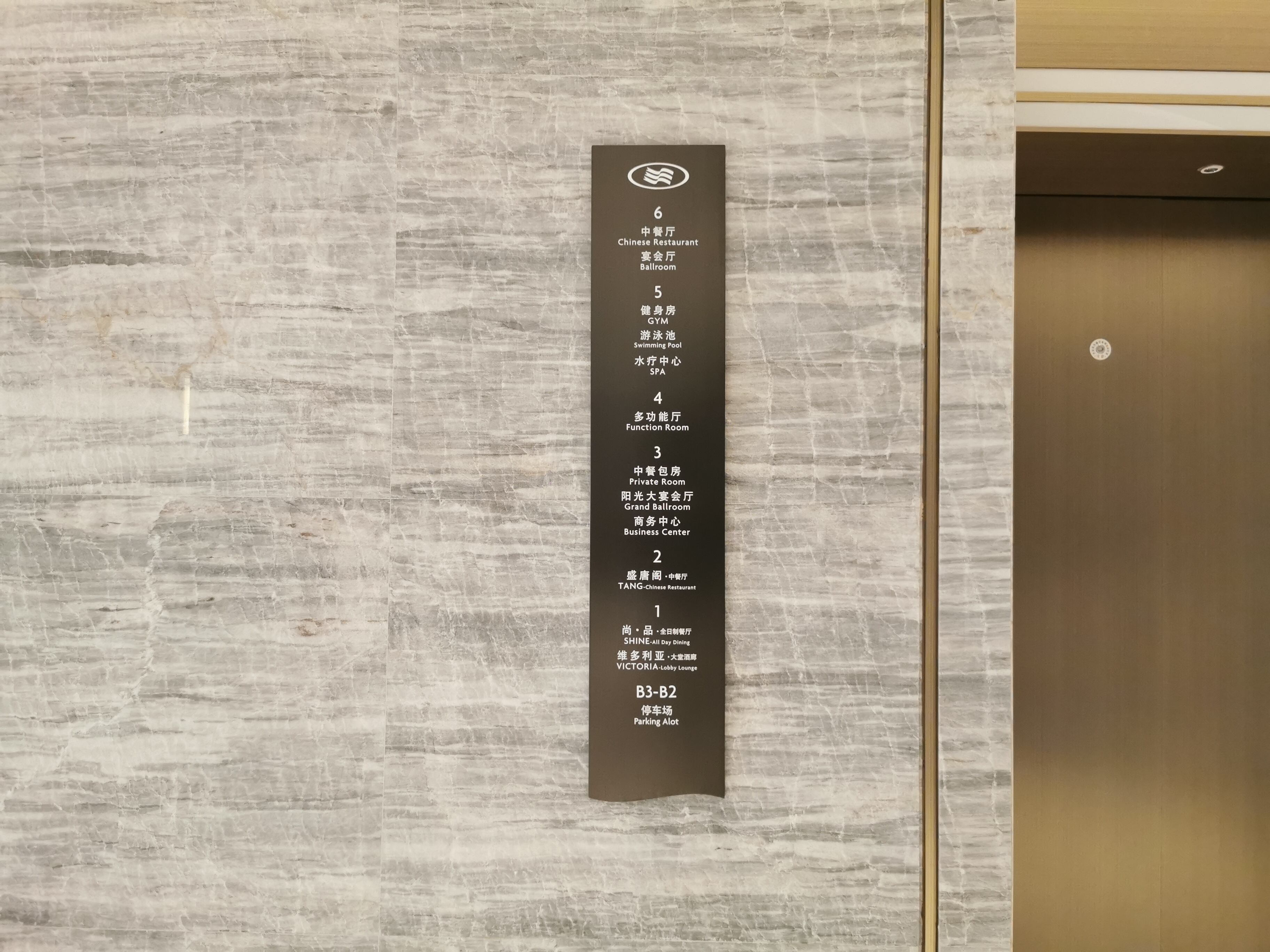Digital Signage Integration for Enhanced Guest Experience
Modern hotels now deploy digital signage systems that serve 18% longer as functional art pieces compared to static signs (HospitalityTech 2023). These solutions blend wayfinding, branding, and real-time communication into unified guest experience tools.
Intelligent Wayfinding Systems Improving Hotel Navigation
Interactive kiosks with AI-powered navigation software reduce lobby congestion by 34% according to recent case studies. Guests access 3D maps showing amenities, event spaces, and personalized route guidance—particularly valuable in resorts spanning 50+ acres.
Digital Lobby Signs as Dynamic Brand Expression Tools
High-resolution LED walls now replace traditional directory boards, showcasing real-time promotions tied to occupancy rates, local cultural events via integration with city tourism APIs, and weather-aware activity recommendations using IoT sensors.
Elevator and Room Display Screens for Real-Time Guest Communication
Hotels report 41% higher engagement with digital concierge screens displaying last-minute room upgrades, spa booking availability, automated check-out extensions, and hyperlocal weather alerts affecting planned activities.
Digital Menu Boards in Restaurants and Lounges Boosting Functionality
Dynamic pricing displays paired with QR code ordering systems achieve 22% higher per-table spending. Real-time updates accommodate ingredient shortages without reprinting physical menus, while allergy filters let guests customize dish views through smartphone pairing.
Sustainable Materials and Eco-Conscious Design in Hotel Signs
Growing demand for eco-friendly hotel signage solutions
Hotels are under growing pressure these days to switch to eco-friendly signs. According to recent data from the Hospitality Trends Report, around two thirds of travelers actually check out a hotel's green credentials before making reservations. Big names in the industry such as Corporate Sign Industries have started focusing on modular sign designs made from aluminum that can be completely recycled, along with something called Greencast® acrylic material. These new materials cut down on replacement waste by about four fifths when compared to old fashioned systems. The move toward sustainability isn't just good for the planet either. Major hotel chains worldwide are getting serious about circular economy concepts throughout all aspects of their business operations, which makes sense given current consumer expectations and regulatory pressures.
Use of reclaimed wood, recycled stainless steel, and biodegradable acrylics
Modern hotel signs combine environmental responsibility with luxury through innovative material pairings:
- Reclaimed oak from decommissioned barns paired with 85% recycled stainless steel for rustic-industrial lobby features
- Biodegradable acrylic composites that decompose within 5 years versus 450+ years for conventional plastics
- FSC-certified bamboo directory boards offering three times the warp resistance of traditional hardwoods
These materials maintain durability while supporting hotels' carbon reduction targets through responsible sourcing practices.
Low-impact manufacturing processes aligning with green certifications
Sign makers who want to stay ahead of the curve are getting their facilities certified for LEED and Green Key standards. They do this mainly because they've switched to solar power for production and started using water based digital printers that don't release those nasty VOCs into the air. The switch to precision CNC routing has cut down on wasted materials quite a bit actually around 35-40% when compared with old fashioned manual cutting techniques. And get this some companies have even begun experimenting with mushroom based packaging instead of traditional plastic foam cushioning. These kinds of green initiatives really make a difference for high end resorts looking to shrink their carbon footprint from signage stuff alone can bring down emissions by roughly two thirds. Plus none of these changes seem to hurt how good the signs look either which matters a lot in upscale settings.
Material Innovation: Blending Stainless Steel, Wood, and Acrylic for Visual Impact
Balancing Durability and Design With Premium Sign Materials
More hotels are mixing materials these days stainless steel, wood, and sometimes even acrylic to meet both lasting durability and good looks. The stainless steel works great outdoors where signs get exposed to weather, but inside spaces need something warmer. That's where wood comes in for those directional signs people see when walking through lobbies. According to recent industry research from last year, about two thirds of hotel guests actually connect this mix of materials with higher end brands. No wonder we're seeing more combinations of metal and clear acrylic in busy spots throughout hotels. These layered designs hold up better over time yet still look nice enough to maintain that upscale feel guests expect.
Metal and Wood Fusion Creating Warm, Modern Aesthetics
When designers mix brushed metal with reclaimed wood, they create visual contrasts that make wayfinding systems stand out as something special rather than just functional items. Take hotel signage for instance many places now use stainless steel letters mounted on walnut panels. This combination gives off a vibe of modern craftsmanship while still feeling warm and natural. Studies looking at how materials affect space perception indicate these mixed material approaches can boost brand image in people's minds by around 30% when compared to signs made from only one type of material. That makes sense since our brains tend to associate diversity in design with higher quality and attention to detail.
Layered Acrylic and Wood Designs Adding Depth to Identity Signage
Backlit acrylic panels sandwiched between wood veneers allow hotels to showcase logos with dimensional depth. This technique boosts nighttime visibility by 150% compared to flat signage while maintaining daytime subtlety, as seen in a 2023 renovation of a luxury hotel chain that reported 40% more guest photo shares featuring its lobby signage.
Case Study: Mixed-Material Signage in a Luxury Boutique Hotel
A coastal resort's renovation replaced traditional brass signage with a three-material system:
- Outdoor: Laser-cut stainless steel posts with teak inlays
- Lobby: Floating acrylic directories on charred oak backdrops
- Suites: Slim-profile acrylic room numbers with bronze edging
Post-implementation metrics showed a 22% reduction in guest navigation complaints and a 33% increase in positive design-related reviews, validating the cost-benefit analysis of mixed-material systems from the 2023 Retail Design Report.
Minimalist Aesthetics, Geometric Forms, and Color Trends in Hotel Signage
Hotel signs increasingly embrace minimalist principles to enhance spatial clarity and modern appeal. The shift toward clean lines and geometric patterns reduces visual clutter while improving wayfinding efficiency—crucial in complex hotel layouts where 83% of guests prioritize intuitive navigation (Hospitality Design Report 2024).
Rise of Minimalist Design and Geometric Shapes for Spatial Clarity
Uncluttered silhouettes and precise angles dominate contemporary hotel signage, with 72% of designers reporting increased use of hexagonal and triangular forms in wayfinding systems. This trend meets growing traveler demand for environments that balance aesthetic sophistication with functional simplicity.
Influence of Scandinavian and Japanese Design Philosophies
Nordic functionality and Japanese wabi-sabi principles shape modern signage through natural material pairings and deliberate asymmetry. A leading hospitality design firm notes Scandinavian-inspired wayfinding systems increased guest satisfaction by 18% through their emphasis on clarity and organic forms.
Earthy Color Palettes: Terracotta, Sand, Forest Green, and Graphite
Warm neutrals and muted earth tones now appear in 65% of newly installed hotel signs, replacing stark whites with psychologically calming hues. These colors align with biophilic design strategies that reduce guest stress levels by 23% according to wellness industry studies.
Color Psychology and Biophilic Design in Guest Experience Optimization
Strategic color selection extends beyond aesthetics, with forest green signage increasing perceived air quality by 31% in lobby areas. Hotels combining natural materials and organic color schemes report 27% higher satisfaction scores in post-stay surveys, confirming the business impact of evidence-based design choices.
Branding and Functionality: Unified Identity Through Strategic Signage Design
Integrating hotel signs with overall branding and interior design
Hotel signs these days need to fit right in with the building's look without sticking out like a sore thumb, all while making sure people remember the brand. According to some research done last year in the hospitality sector, hotels that have matching sign systems tend to get about 40% better brand recognition from their visitors. Putting those glowing logos where guests first see them in the lobby area makes a big difference. And when corridor signs match the overall theme, it helps create this consistent feel throughout the property. The same colors and fonts show up on everything from the website to those little plastic key cards in guest rooms too.
Custom signage reinforcing luxury, heritage, or boutique positioning
Boutique hotels now commission hand-crafted brass plaques showcasing artisan partnerships, while heritage properties restore vintage neon signs using archival blueprints. Luxury resorts increasingly combine matte gold finishes with local materials like lava stone, creating exclusive sign collections that double as art installations.
Data insight: 78% of guests rely on intuitive wayfinding (2024 survey)
Recent research reveals three out of four travelers prioritize clear navigation markers when selecting accommodations. This underscores the need for hotel signs that balance aesthetic ambition with functional clarity, particularly in complex layouts featuring multiple dining venues and spa facilities.
Balancing digital innovation with human-centered, tactile design
Leading hotels now pair LED directory boards with textured wayfinding walls featuring recessed bronze lettering. This approach caters to both tech-savvy guests expecting real-time updates and traditional travelers who value tactile interactions, as demonstrated in mixed-material designs improving dwell time by 22% during 2023 pilot programs.
FAQ Section
What is digital signage and how does it enhance guest experience?
Digital signage refers to electronic displays used for wayfinding, branding, and real-time communication in hotels. It enhances guest experience by providing interactive kiosks, real-time promotions, and AI-powered navigation systems.
Why is there a growing demand for eco-friendly hotel signage?
The demand for eco-friendly signage stems from increasing traveler awareness of sustainability. Hotels that implement eco-friendly solutions help reduce environmental impact and align with consumer expectations for corporate responsibility.
How do mixed-material signs benefit hotels?
Mixed-material signs enhance aesthetic appeal while providing durability. The combination of materials such as stainless steel, wood, and acrylic supports brand image, boosts guest satisfaction, and reduces navigation complaints.
What design trends are influencing modern hotel signage?
Trends such as minimalist aesthetics, geometric shapes, and earthy color palettes influence modern hotel signage. These elements improve spatial clarity, enhance guest satisfaction, and support biophilic design strategies.
Table of Contents
- Digital Signage Integration for Enhanced Guest Experience
- Sustainable Materials and Eco-Conscious Design in Hotel Signs
- Material Innovation: Blending Stainless Steel, Wood, and Acrylic for Visual Impact
- Minimalist Aesthetics, Geometric Forms, and Color Trends in Hotel Signage
- Branding and Functionality: Unified Identity Through Strategic Signage Design
- FAQ Section

